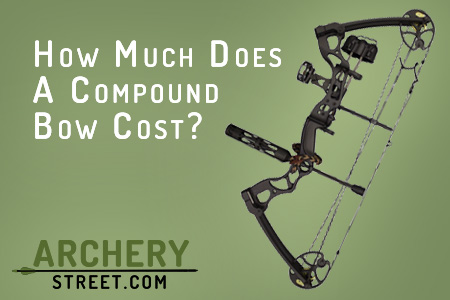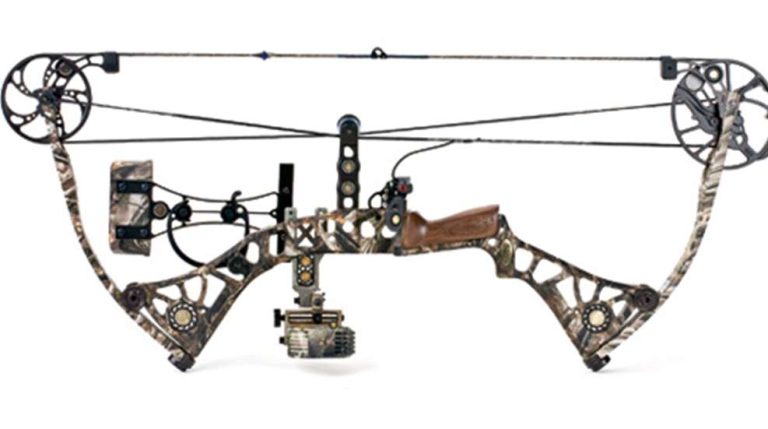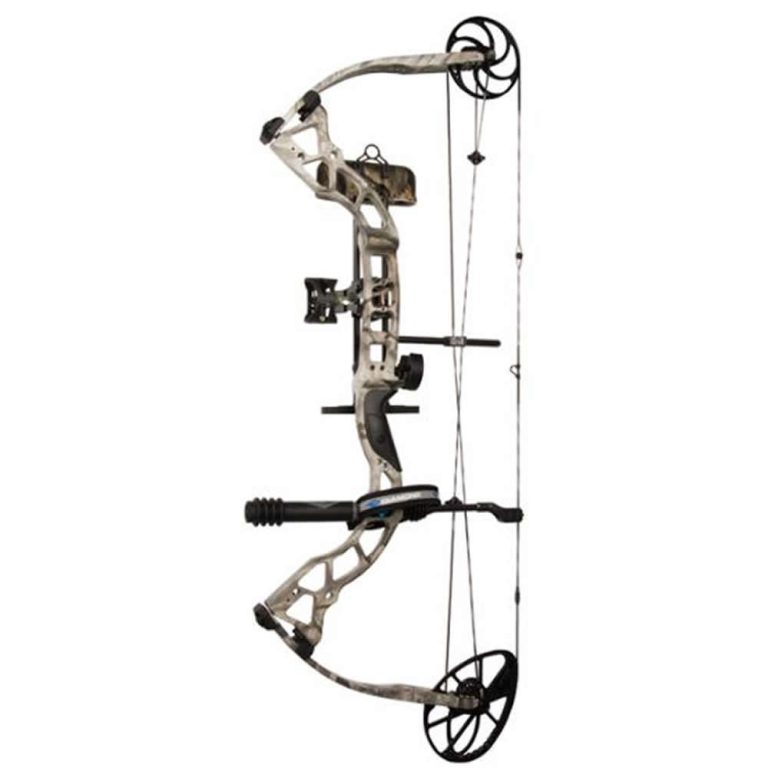What Sets A Crossbow Apart From Other Bows
The world of archery is vast and diverse, with various types of bows that cater to different preferences and needs. One particular type of bow that stands out from the rest is the crossbow. Unlike traditional bows like longbows or recurve bows, a crossbow has a unique design and mechanism that sets it apart. With its horizontal limb orientation and a stock that resembles a rifle, the crossbow offers a distinctive shooting experience. It combines the accuracy and power of a bow with the convenience and ease of use of a firearm, making it a popular choice for hunters and enthusiasts alike. So what exactly sets a crossbow apart from other bows? Let’s dive into the details and explore the fascinating world of crossbows.

What is a Crossbow?
A crossbow is a type of bow that is mounted horizontally on a stock, similar to a rifle. It is a ranged weapon that uses a mechanism, such as a trigger, to release the bowstring and propel an arrow, also known as a bolt, towards the target. Unlike traditional bows, which require the archer to hold the bowstring back while aiming, a crossbow allows the archer to lock the string in place, making it easier to aim and hold the draw. Crossbows have a long history and have been used for hunting, warfare, and sport.
History of Crossbows
The history of crossbows dates back thousands of years. The earliest known crossbows, called prod crossbows, were developed in ancient China around the 5th century BCE. These early crossbows had simple mechanisms and were primarily used for hunting and military purposes. Over time, crossbows spread to other parts of Asia, Europe, and the Middle East, where they played a significant role in warfare.
During the Middle Ages, crossbows became increasingly popular in Europe, especially among armies and knights. They offered a significant advantage on the battlefield, allowing soldiers to shoot with more accuracy and at a greater distance than traditional bows. Crossbows continued to evolve, with new designs and mechanisms being developed to improve accuracy, power, and ease of use.
In modern times, crossbows have become popular as a sport and recreational activity. They are also widely used for hunting, particularly for game that requires a high degree of accuracy and can be difficult to approach. Today, crossbows come in a variety of styles and designs, each suited for different purposes and user preferences.
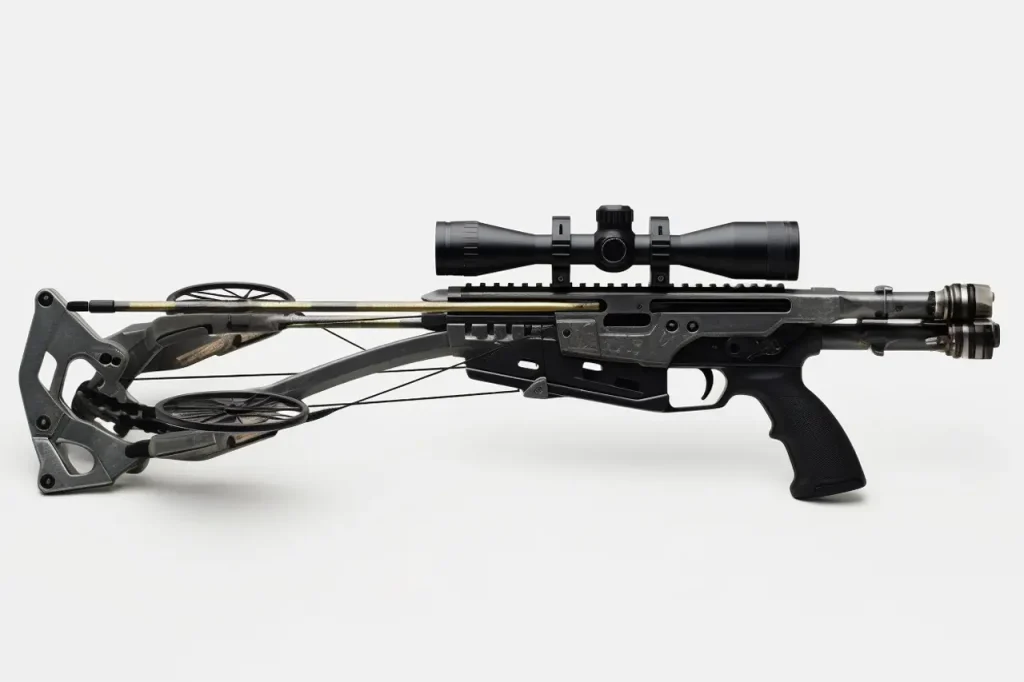
Key Components of a Crossbow
To understand the workings of a crossbow, it is essential to familiarize yourself with its key components. Each part plays a vital role in the functionality and performance of the crossbow.
Stock
The stock, also known as the body or frame, is the main structure of the crossbow. It provides stability and support to the other components. Stocks can be made from various materials such as wood, aluminum, or synthetic compounds. The shape and design of the stock can differ depending on the type of crossbow.
Limbs
The limbs of a crossbow are the flexible parts that store and release the energy needed to propel the bolt. Typically made from fiberglass or carbon fiber, the limbs are attached to the stock and bend when the crossbow is cocked. Upon releasing the bolt, the limbs return to their original position, transferring the stored energy to the bolt.
Bowstring
The bowstring is a crucial component of the crossbow as it connects the two limbs and propels the bolt forward. Traditionally made from high-tensile strength materials such as Dacron or Fast Flight, modern crossbow strings are often made from synthetic materials like Dyneema or Spectra. Proper care and maintenance of the bowstring are necessary for optimal performance and longevity.
String Latch
The string latch, sometimes referred to as the stirrup, is a mechanism located at the front of the crossbow. It is used to secure the bowstring in place while cocking the crossbow. The string latch provides a stable platform for the archer to engage the cocking device and ensures the bowstring is under tension before firing.
Trigger Mechanism
The trigger mechanism is responsible for releasing the bowstring and firing the bolt. It consists of a trigger, sear, and safety mechanism. When the trigger is pulled, it releases the sear, allowing the bowstring to propel the bolt forward. The safety mechanism prevents accidental firing and is an essential feature for safe crossbow operation.
Scope or Sights
Most modern crossbows are equipped with a scope or sights to aid in aiming. Scopes provide magnification and crosshair markers for precise target acquisition. Traditional iron sights, similar to those found on rifles, are also commonly used. The type and quality of the sight can greatly affect accuracy and overall shooting experience.
Cocking Device
Cocking a crossbow can require a significant amount of strength, especially for higher draw weight models. To assist with the cocking process, many crossbows come equipped with cocking devices. These devices can be manual or mechanical and help reduce the effort required to draw and lock the bowstring in place. Cocking devices are particularly beneficial for those with limited strength or mobility.
Advantages of Crossbows
Crossbows offer several advantages over traditional bows, making them a popular choice for hunting, target shooting, and recreational use. Here are some of the key advantages:
Ease of Use
Compared to traditional bows, crossbows are relatively easy to use, especially for beginners. They are often equipped with features such as cocking devices and scopes, which aid in accuracy and ease of operation. The locked position of the bowstring allows the archer to take their time when aiming, reducing the physical strain and mental effort required to maintain a draw.
Increased Accuracy
The design of a crossbow, with its stock and sights, provides enhanced stability and aiming capabilities. The locked position of the bowstring allows for a consistent draw length and anchor point, leading to improved accuracy. Additionally, many crossbows have adjustable sights or scopes, allowing for precise adjustments based on distance and environmental conditions.
Minimal Physical Strength Required
One of the significant advantages of crossbows is that they require less physical strength to operate compared to traditional bows. The locking mechanism of the bowstring eliminates the need to hold the string back while aiming, reducing muscle fatigue and allowing for longer periods of aiming without losing accuracy. This can be particularly beneficial for individuals with limited upper body strength or physical disabilities.
Quiet and Stealthy
Crossbows are generally quieter than traditional bows, especially during the shooting process. The locked position of the string and the use of dampening materials on the limbs and stock help reduce vibration and noise upon firing. This quieter operation makes crossbows advantageous for hunting, where stealth is crucial to avoid alarming game animals.
Ability to Maintain Aim
Another advantage of crossbows is the ability to maintain aim for an extended period, even in challenging positions. The locked position of the bowstring allows the archer to focus on the target without the strain of holding the string back. This can be particularly beneficial when hunting game that requires patience and precise timing for the perfect shot.
Reduced Recoil
Crossbows typically have less noticeable recoil compared to traditional bows. The horizontal orientation and stock design help absorb and distribute the recoil force more evenly, resulting in a more stable shooting experience. Reduced recoil can contribute to improved accuracy, especially for novice archers who may have difficulty managing the recoil of a traditional bow.
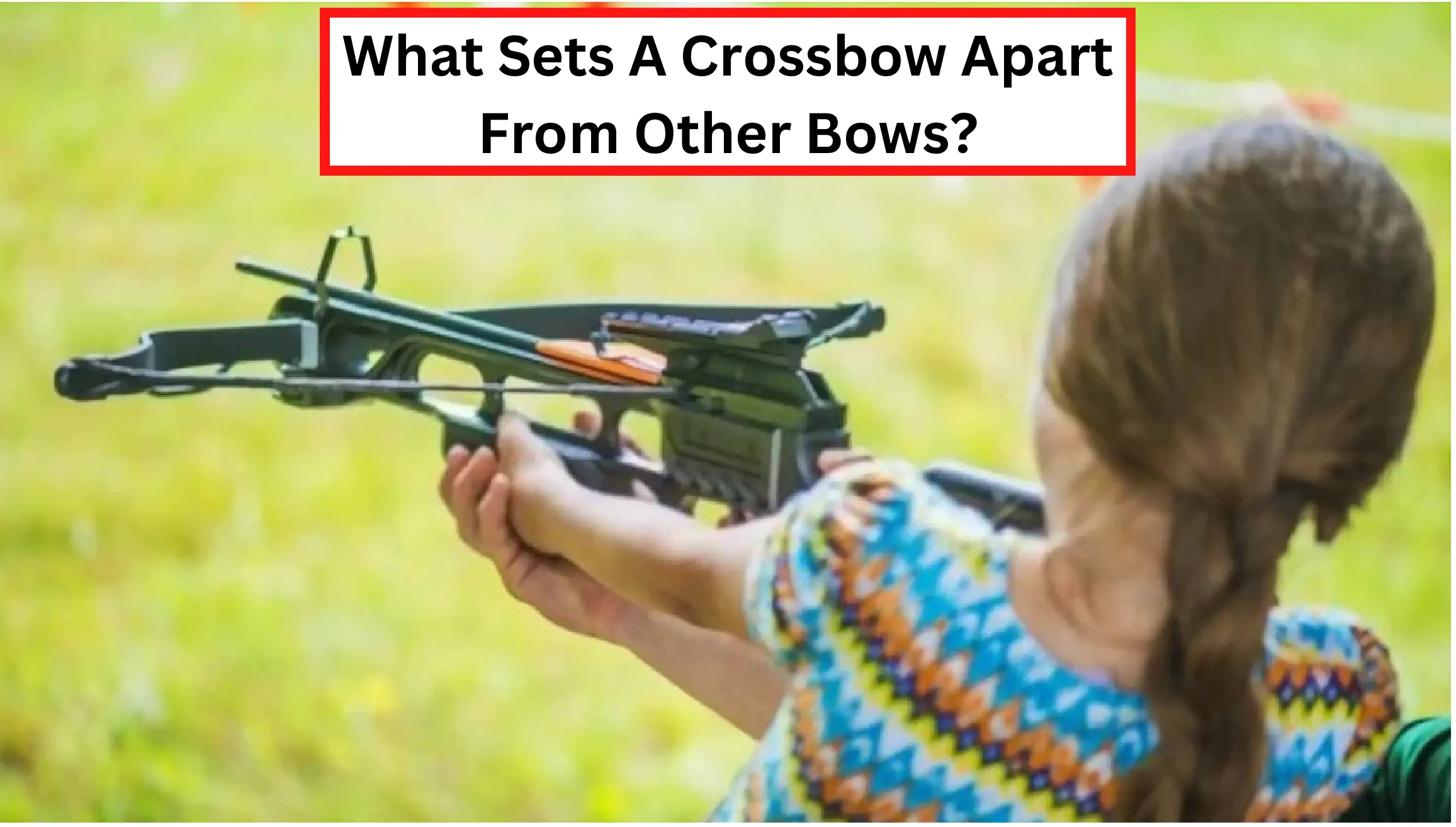
Types of Crossbows
There are several different types of crossbows available, each with its unique design and features. Here are three common types:
Recurve Crossbows
Recurve crossbows get their name from the curved shape of their limbs, which store energy more efficiently. These crossbows have a traditional aesthetic and are known for their reliability and simplicity. Recurve crossbows are generally lighter and more maneuverable than other types, making them popular for hunting and target shooting.
Compound Crossbows
Compound crossbows utilize a system of cables, pulleys, and cams to achieve high power and reduced holding weight. The design of compound crossbows allows for a lower holding weight, making it easier to hold the bow at full draw for longer periods. Compound crossbows are known for their speed and accuracy, making them a popular choice among hunters and competitive archers.
Reverse Draw Crossbows
Reverse draw crossbows have a unique design where the limbs are oriented in the opposite direction relative to conventional crossbows. In this configuration, the cams and string are located closer to the shooter, resulting in a more balanced and ergonomic shooting experience. Reverse draw crossbows often have a narrower profile and can produce high arrow speeds.
When choosing a crossbow, consider the intended use, personal preferences, and the specific advantages offered by each type.
Choosing the Right Crossbow
When selecting a crossbow, there are several factors to consider to ensure it fits your needs and shooting style. Here are some key considerations:
Intended Use
Determining the primary use of the crossbow is essential. Are you planning to use it for hunting big game, target shooting, or recreational purposes? Different crossbows have specific features and capabilities that make them better suited for certain activities. Consider the intended use and choose a crossbow that aligns with your goals.
Draw Weight
The draw weight of a crossbow refers to the force required to cock and hold the bowstring in the fully drawn position. It is an important factor to consider, as it affects the power and speed of the arrow. Choose a draw weight that you can comfortably handle and consistently control. It is recommended to start with a lower draw weight if you are a beginner and gradually increase as your strength and skill improve.
Draw Length
The draw length of a crossbow is the distance from the front of the crossbow to the point at which the bowstring reaches full draw. It is crucial to choose a crossbow with a draw length that matches your personal measurements. An incorrect draw length can affect accuracy and overall shooting experience. Consider consulting with a knowledgeable professional to determine your ideal draw length.
Cocking Mechanism
Crossbows typically offer different cocking mechanisms, ranging from manual cocking to mechanical devices. Manual cocking requires physical strength and may not be suitable for everyone. Mechanical cocking devices, such as crank systems or rope cockers, make cocking easier and more consistent. Consider your physical abilities and preferences when choosing a cocking mechanism that suits you.
Size and Weight
The size and weight of a crossbow can impact your shooting experience and maneuverability. Smaller crossbows are generally more compact and easier to handle in tight spaces such as hunting blinds or tree stands. However, larger crossbows may offer greater stability and accuracy due to their longer power stroke. Consider the environment in which you will be using the crossbow and choose a size and weight that is comfortable and practical for your needs.
Noise Level
When hunting game, minimizing noise is crucial. Some crossbows are designed with noise dampening features such as limb dampeners and string silencers. These features help reduce vibration and noise upon firing, making the crossbow quieter and less likely to startle nearby animals. Consider the noise level of a crossbow and choose one that aligns with your hunting objectives.

Accessories for Crossbows
Several accessories can enhance your crossbow shooting experience and improve performance. Here are some common accessories to consider:
Bolts/Arrows
Selecting the right bolts or arrows for your crossbow is essential for accuracy and safety. Bolts should be matched to your specific crossbow’s draw weight and length. Choose high-quality bolts that are durable and designed for optimal performance.
Broadheads
Broadheads are the tips of bolts or arrows that are used for hunting. They come in different styles, including expandable and fixed-blade. Consider the type of game you will be hunting and choose broadheads that are suitable for the target animal and legal hunting regulations.
Cocking Devices
Cocking devices can make the process of drawing and locking the string easier and more consistent. Mechanical cocking devices, such as rope cockers or crank systems, assist in reducing the effort required to cock the crossbow. Consider using a cocking device that matches your physical abilities and shooting preferences.
Optics/Sights
Adding optics or sights to your crossbow can greatly improve accuracy and target acquisition. Scopes provide magnification and crosshair markers for precise aiming. Red dot sights or holographic sights are also popular options. Choose optics or sights that suit your shooting style and preferences.
Silencers and Dampeners
Silencers and dampeners reduce noise and vibration upon firing, making the crossbow quieter and more stealthy. Limb dampeners, string silencers, and bolt dampeners are common accessories that can help minimize noise and improve the shooting experience.
Quivers
Quivers are attachments that hold bolts or arrows while you are shooting or hunting. They can be attached to the crossbow or worn separately. Quivers come in different styles, including back quivers and hip quivers. Choose a quiver that provides easy access to your bolts and suits your specific needs.
Stabilizers
Stabilizers can improve balance, reduce hand shock, and enhance accuracy. They attach to the front of the crossbow and help stabilize the bow during the shot. Consider adding a stabilizer to your crossbow setup to improve shooting consistency and overall performance.
Safety Considerations for Crossbows
As with any weapon, safety is of utmost importance when using a crossbow. Here are some key safety considerations to keep in mind:
Proper Handling and Cocking
Always handle a crossbow with care and follow the manufacturer’s instructions for proper use. Ensure you have a stable and secure grip on the crossbow while cocking and shooting. Practice safe loading and unloading procedures to prevent accidental firing.
Use of Safety Mechanisms
Crossbows are equipped with safety mechanisms to prevent accidental firing. Familiarize yourself with the safety features of your crossbow and always engage them when the bow is not in use or when loading and unloading bolts. Never rely solely on the safety mechanism – always treat the crossbow as if it is ready to fire.
Knowledge of State and Local Laws
Before using a crossbow, familiarize yourself with the laws and regulations governing their use in your area. Ensure you have the appropriate licenses and permits if required. Adhere to all hunting regulations and guidelines to ensure the safe and legal use of your crossbow.
Importance of Protective Gear
Wear appropriate protective gear when shooting a crossbow. This includes safety glasses or goggles to protect your eyes from debris or string snap, as well as ear protection if shooting in a confined space. Consider using additional protective gear such as armguards to prevent injury from the bowstring.

Maintenance and Care of Crossbows
To ensure the longevity and optimal performance of your crossbow, regular maintenance and care are necessary. Here are some key maintenance considerations:
Regular Inspection and Cleaning
Inspect your crossbow regularly for wear and damage. Look for any cracks or deformities in the stock, limbs, and other components. Clean your crossbow regularly, paying attention to the string, cables, and cams. Remove any dirt, debris, or moisture that may affect the performance of the crossbow.
String and Cable Maintenance
Check the condition of your bowstring and cables regularly. Look for signs of fraying, stretching, or wear. Replace the string and cables as needed or as recommended by the manufacturer. Properly wax the string and cables to reduce friction and extend their lifespan.
Lubrication
Apply lubricant to moving parts, such as the trigger mechanism and cocking device, following the manufacturer’s recommendations. Lubrication helps reduce friction, prevents corrosion, and ensures smooth operation. Avoid over-lubrication, as this can attract dirt and debris.
Storage Considerations
When not in use, store your crossbow in a clean, dry, and secure location. String and cables should be relieved of tension to maintain their shape and longevity. Consider using a case or cover to protect your crossbow from dust, moisture, and damage. Follow the manufacturer’s guidelines for long-term storage to prevent any deterioration or degradation of materials.
Conclusion
Crossbows have a storied history and have evolved into powerful and versatile weapons. Their unique design and features make them a popular choice for hunting, target shooting, and recreational use. From the ease of use and increased accuracy to the wide range of accessories available, crossbows offer many advantages over traditional bows. By understanding the key components, types, and considerations for choosing the right crossbow, enthusiasts can find a weapon that suits their needs and enhances their shooting experience. Remember to prioritize safety, perform regular maintenance, and enjoy the thrill of shooting a crossbow responsibly.


